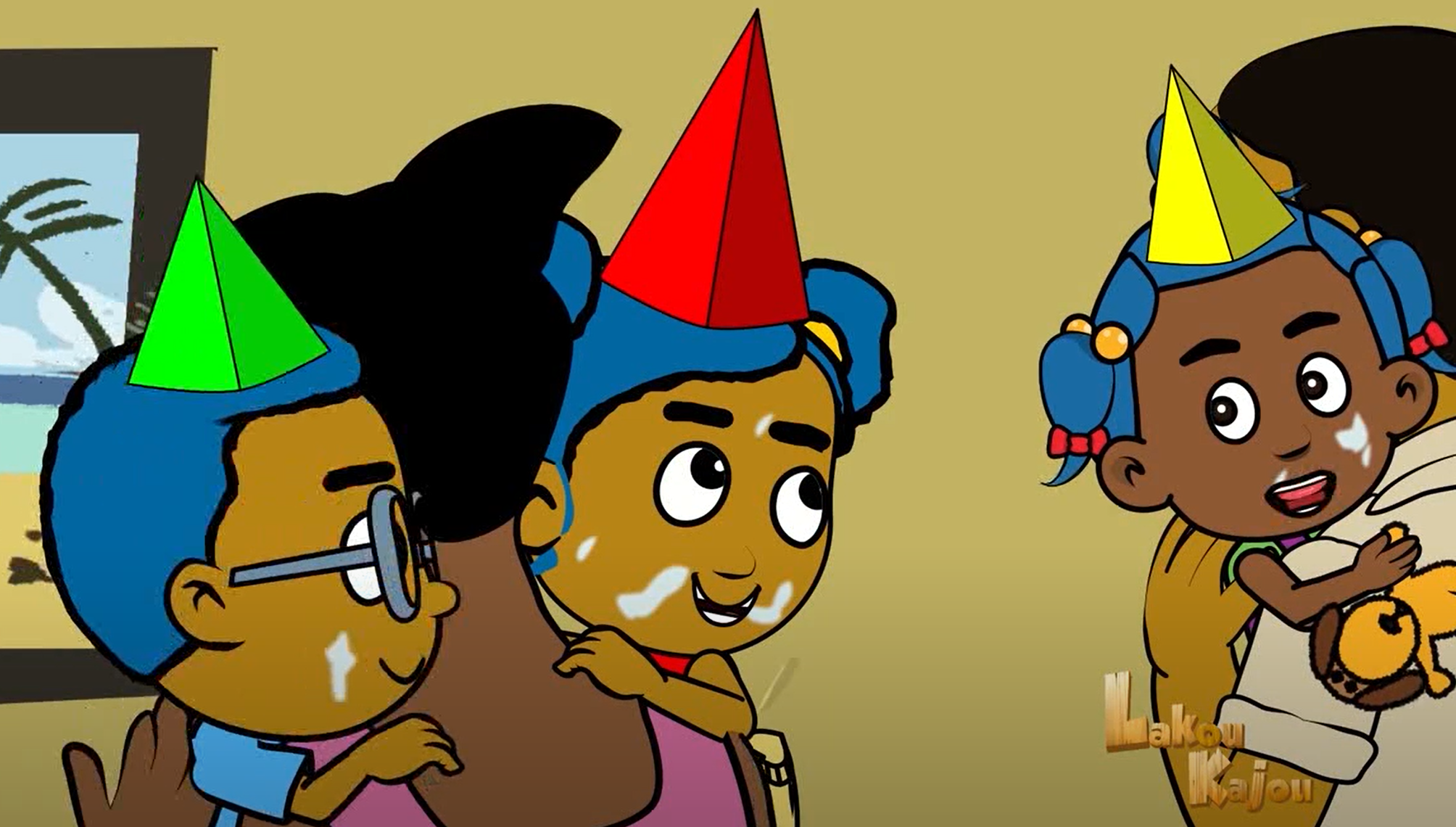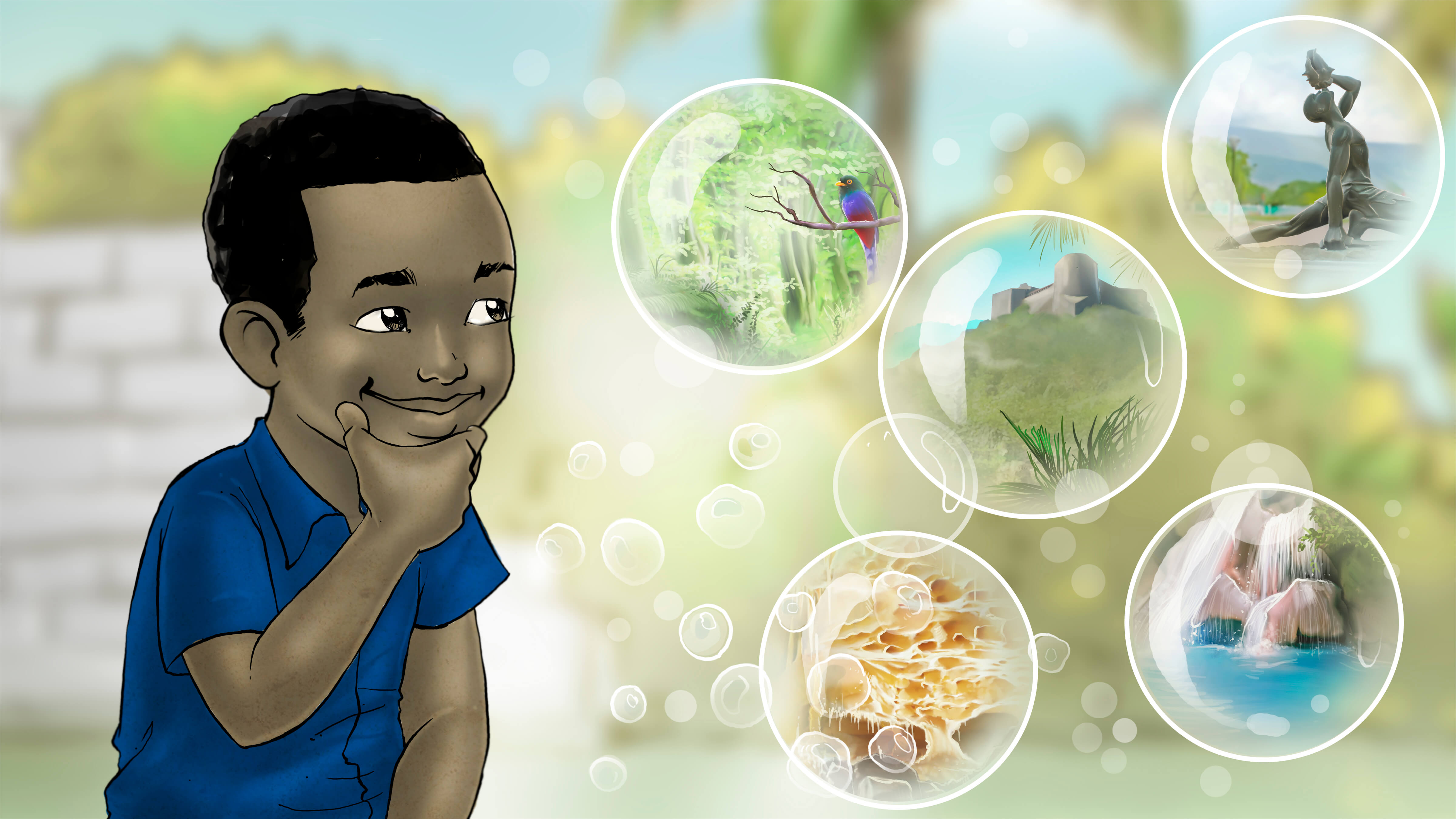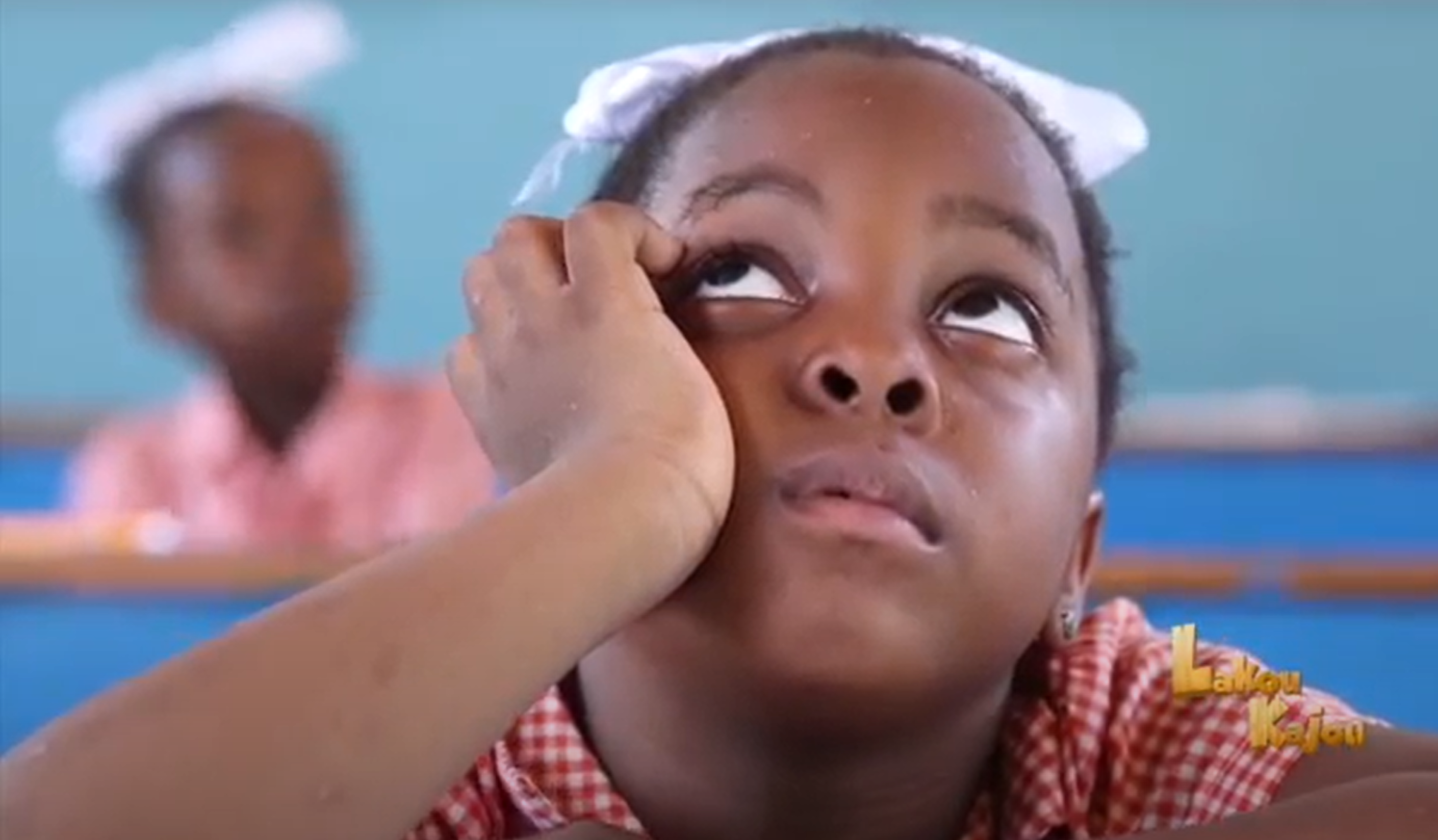The Magic of Lakou Kajou
A conversation with Blue Butterfly Collaborative
If you’ve ever watched Sesame Street, Dora the Explorer, or any other children’s educational television program, you understand the magic (and fun!) of characters bringing learning to life for young learners. Chary Cole and Alexandrine Benjamin of Blue Butterfly Collaborative and two creators of the Haitian educational program Lakou Kajou are very familiar with this magic. Chary and Alexandrine recently joined the GC-DWC for a conversation on the role of Lakou Kajou in education in Haiti and pulled back the curtain on their creative process to give us a glimpse on just how the magic is made.

Lakou Kajou was developed on the belief that Haitian children deserve really good programming in which they can see themselves in the stories through the characters, the setting, and the conflicts. This is not a new concept and one that is regularly discussed in conversations surrounding children and young adult media and entertainment. The concept, often referred to as windows and mirrors, is quite simple. Children learn best when they can see themselves in stories: mirrors. However, this does not mean they should not have opportunities to learn from those who are different from them or opportunities to escape to new contexts: windows. This is why when children can see themselves reflected in characters and relate to the setting and conflict of a story, the opportunity for learning and engagement is exponential. Also, when this happens, the willingness of children to look through “windows” grows.
As one can imagine, developing an educational program that does this well and balances the educational needs of its audience is no small feat and requires great intentionality, attention to detail, and creativity. What is perhaps most striking then about Lakou Kajou is that it does all of these very well.
Lakou Kajou has a magazine format and thus has a mixture of animation, live action, and other formats within an episode. This choice is quite intentional as it provides Blue Butterfly with the opportunity to feature different elements of the Haitian culture, a priority for the team. It was very important for the Blue Butterfly team to capitalize on the talent and creativity already present in Haiti in order to make the show. All of the animators and artists are Haitian, which becomes apparent in the animation that boasts details only a Haitian artist could think of. Think detailed Haitian neighborhoods, complete with the neighbor’s chicken making its way across the lakou (neighborhood). Haitian artists’ work and ingenuity is also present in the fable segment of Lakou Kajou in which the show uses pictures, featuring original art, to tell a story with some type of prosocial theme.

The live action segments also create opportunities for Haitian children to learn about themselves and their culture through the eyes of another Haitian child. For example, in one segment, a child shows viewers around one of Haiti’s most famous landmarks, the Citadel. By having a child host these live action segments, Lakou Kajou enables children to be their own storytellers and documents children’s lives in Haiti in a positive manner through a genuine perspective.
Beyond each episode’s careful crafting of artwork, animation, and live action, each episode takes a whole child approach to education. Designed by Haitian educators, an educational theme, such as the water cycle or Haitian landmarks, is carried throughout the episode. Literacy and numeracy are embedded in each episode as well as transversal skills such as inclusion or gender equity. Understanding the importance of mother tongue instruction in improving learning outcomes and addressing the fact that 40% of the world’s population does not have access to an education in a language they speak or understand, Lakou Kajou is entirely in Haitian Creole. The show is also intentional in its segmentation of its educational content so that clips of the program can stand-alone and be shared on multiple platforms such as social media to increase its reach.
While each episode has perhaps more obvious moments for learning, there are also carefully constructed and more subtle learning opportunities throughout. These moments are most notable in the character construction and development. As Chary explains, when you develop children’s media, characters are designed to have different affordances or educational affordances. Essentially, characters are used as vehicles to convey different messages or to teach different lessons. Frequently, Lakou Kajou uses its characters to tackle salient social issues in Haiti. For example, there is a character specifically designed for sharing information on children left behind and another for promoting messages of gender equity.
Embedded within the storylines are also strategies to support children in addressing social issues they may face in their day-to-day lives as well as tools to support children’s social and emotional development. These learning moments are designed to not only empower children to advocate for themselves but to advocate for those around them and help their friends.

The impact of Lakou Kajou’s intentionality, creativity, and attention to detail is evident in the success of the program illustrated through both its warm reception in Haiti as well as the results of a recent study on educational impact. Researchers from the University of Maryland conducted a school-based randomized control trial to determine whether exposure to Lakou Kajou results in positive development outcomes for young children (6-9 years old) with respect to literacy, numeracy, gender equity, and several other educational themes addressed in specific episodes.
The study found that students who watched Lakou Kajou showed significant gains in literacy (25%), numeracy (24%), and gender equity (15%) in comparison to students who watched an alternative program over the same period of time. Additionally, students showed significant gains in a series of other educational themes including the environment, process, photosynthesis, tools, landmarks, measurement, and justice (Borzekowski et al, 2021).

However, the success of Lakou Kajou is not to say its development and continuing production is not without challenges. In Haiti, daily production is a challenge. There are safety issues with travelling to studios, and it’s difficult to get child-actors to studios to tape content. People are also living very stressed lives. When people are stressed, it is hard to focus, and limited resources challenge people’s creativity.
However, in Blue Butterfly’s experience, it is important to see these challenges as opportunities and to make the best with what is available.
Haiti’s context, with limited household access to technology and the internet, poses another key challenge to the distribution of Lakou Kajou and ensuring it reaches as many learners as possible. Although Lakou Kajou is broadcast on television, in an effort to combat the digital divide, Blue Butterfly actively distributes episodes to schools and community organizations via flash drives to share with students on computers and produces audio versions of its shows to go out on radio. They also have many printed materials available.
The team’s flexibility in adapting materials for wider spread distribution became particularly useful during COVID-19 school closures. Blue Butterfly was quickly able to create and deliver audio content via WhatsApp groups to learners and families and is now in the process of creating a science-based audio program using the same method.
While these challenges can be frustrating and require creativity and flexibility, the fact remains that there is an entire generation of incredibly smart and creative kids in Haiti who deserve the best education possible. In light of this knowledge, challenges feel much smaller to the team.
For actors and educators looking to use their creativity to contribute to education interventions in Haiti, Chary and Alexandrine encourage investing the time to genuinely understand the country and its culture and to collaborate with Haitians. The best content for Haitian learners needs to be driven from a Haitian perspective. Fortunately, Haiti is blossoming with a wealth of creative thinkers, ready to usher in the next generation of learners through the exciting and magical world of digital media.
To learn more about Lakou Kajou and Blue Butterfly, visit https://www.bbutterfly.org/
Photos courtesy of Blue Butterfly.
Borzekowski, D., Ahmad, S., Dura, E., and Maurice, M. (2021). The Impact of Lakou Kajou on Educational Outcomes among Haitian Children: A School-Based Randomized Control Trial Study. School of Public Health, University of Maryland.
